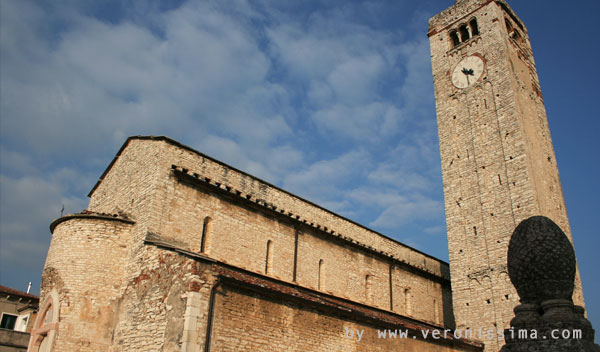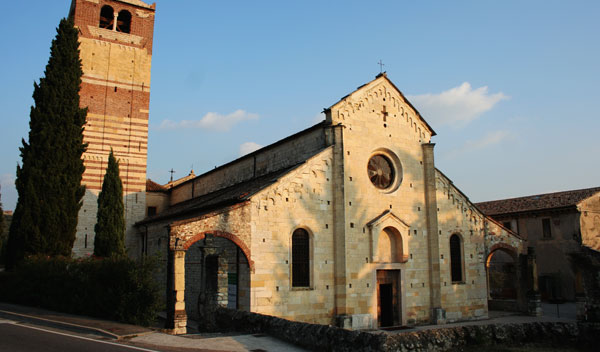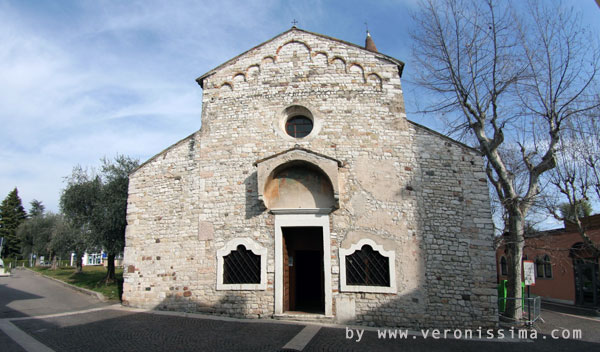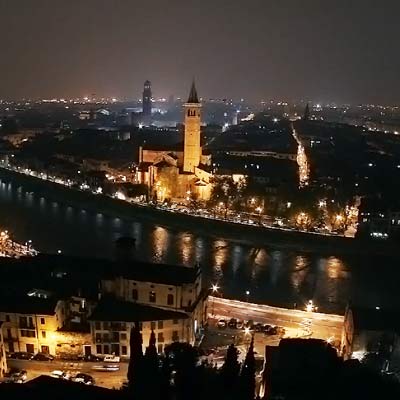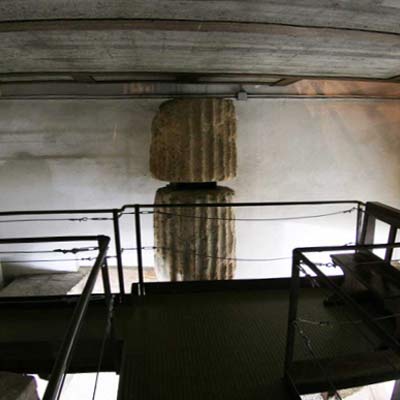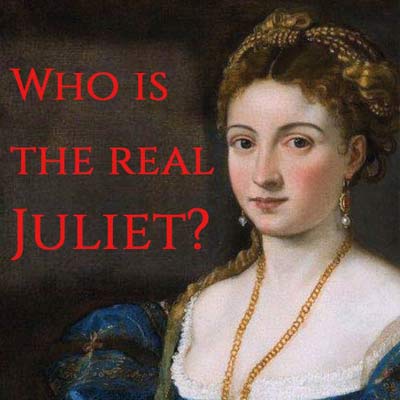San Giorgio
Churches in the Province of Verona
San Giorgio is the Romanesque parish that gives the name to one of the most evocative villages of Valpolicella, the famous wine production area of Verona. It was built in Lombard times on the ruins of a Roman temple which was built on a place of worship of the ancient civilizations living in the area.
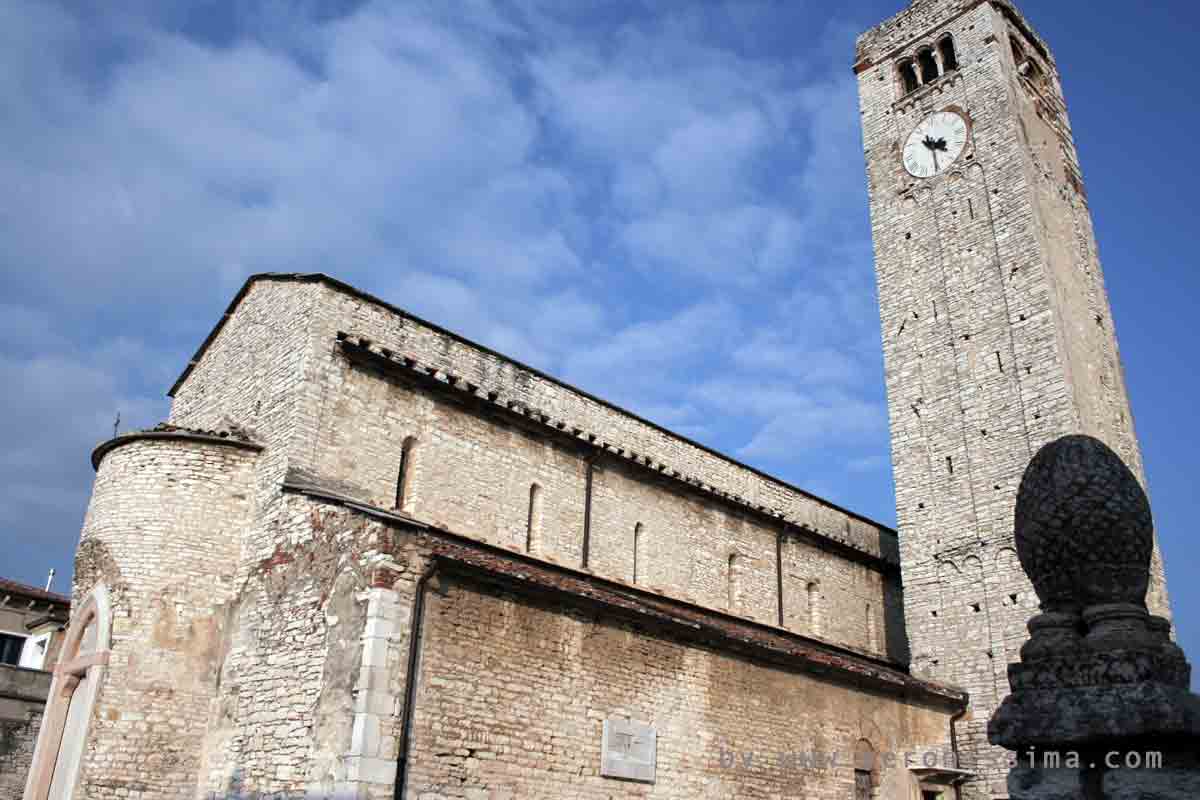
Oncoming Tours
Info & Guided Tours:
+39 333 2199 645 info@veronissima.com P.I. 03616420232 C.F. CPPMHL74L13L781C
With Valpolicella tourist guides discovering the Romanesque parish church of San Giorgio.
San Giorgio is one of the most fascinating and historically rich churches in the Verona area. It is located in the village that takes its name from it, on the western side of Valpolicella, at the foot of Mount Solane, near the southern end of Valdadige, a few kilometers from Lake Garda and Verona which, together with the slopes covered with olive groves, vineyards and cypress trees, make up the splendid panorama that can be enjoyed from the open space in front of the church.
Since prehistoric times the place where today stands the village of San Giorgio was inhabited by the ancient peoples of the north-east of Italy: Reti and Arusnati in particular, which in Valpolicella had formed a sort of federation between city-states of which San Giorgio was probably a common religious center with a sanctuary dedicated to the Sun. Some monumental remains of this ancient building can still be seen on one side of the parish churchyard and the altar of the temple was later used as the basement of one of the columns of the nave.
The parish church of San Giorgio was built around the 8th century.
After the Roman colonization that affected a large part of Valpolicella, the barbarian invasions followed and with them the progressive spread of the Christian religion.
The church was built in the simple and austere forms of the early Romanesque style, using the abundant local limestone. The double apse and the ciborium show instead the strong Lombard influence. The ciborium is a characteristic canopy structure supported by four columns and overhanging the altar and the tabernacle containing the particles. It is a typical architectural element of Longobard sacred architecture and is often finely decorated.
Even the ciborium of San Giorgio di Valpolicella is in fact decorated with a very fine relief of knots and stylized geometric and animal motifs typical of Celtic art. The ciborium is signed as a work of master Orso, and was made at the time of the Lombard king Liutprando.
The interior of the church is divided into three naves. The little light that filters through the narrow windows creates a suffused atmosphere of recollection inside. The thick walls are mostly left with simple exposed stones apart from the cycles of frescoes that decorate the apses, the inside of the arches and the walls of the aisles. These include The Last Supper, a group of Apostles around the Holy Table and an Expulsion from Paradise. The style of the paintings, simple and archaic, still fascinates for its expressive and communicative impact.
In the twelfth century, a cloister was built next to the church, originally at the center of a complex that probably included other buildings that housed the large community of clerics assigned to the parish. Unfortunately, at the beginning of the nineteenth century, these buildings were demolished to make room for the rectory, leaving only three sides of the cloister, characterized by the series of capitals that decorate the small columns. Each one of these capitals is different from the others, worked in archaic forms representing grotesque animals and vegetable elements such as leaves and the ever-present bunches of grapes.
The parish church of San Giorgio, together with the village of the same name, is often a stop on guided tours to discover Valpolicella and can be a perfect integration of a visit with wine tasting in one of the many wineries of the area or a panoramic stop on a journey from Verona to Lake Garda passing through the beautiful hills of Verona.
For any questions or more detailed information about guided tours and itineraries with tour guides of Valpolicella and Verona, please write to us.
Info e Tours:
+39 333 2199 645 info@veronissima.com P.I. 03616420232 C.F. CPPMHL74L13L781C

 IT
IT 日本
日本 DE
DE FR
FR 中文
中文 ES
ES